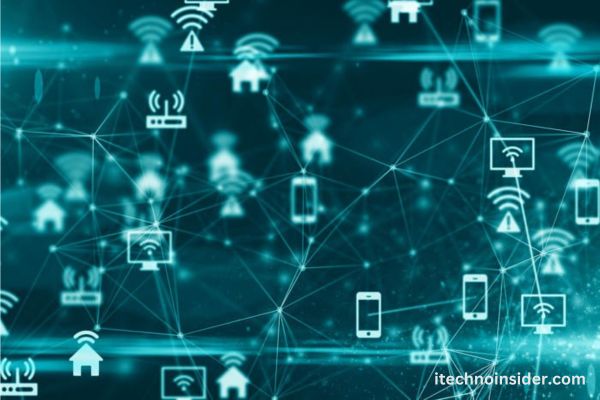
What Is Wireless Communication?
Wireless Communication is the technology that enables devices to exchange information without the use of wires. It can be used to connect personal computers or phones, industrial control systems and even cars.
Wireless signals typically travel in all directions, so ongoing transmissions on the same channel can interfere with each other. To avoid this, wireless protocols use a combination of random back-off and interference sensing.
Transmitter-Wireless Communication
The transmitter converts data into electromagnetic signals that are broadcast over a wireless communication medium. The signals are then received at the receiver, where they undergo a process called demodulation to return them to their original form.
Wireless transmitters typically feature an antenna to broadcast the signal over a given distance. The transmitter also contains a circuit that modulates the amplitude of a radio wave with information to transmit data over long distances. The transmitter must be able to avoid interference from other devices that are trying to transmit at the same time. This is accomplished by a mechanism called random back-off.
In addition, a transmitter must be able to withstand interference from environmental factors. For example, a transmitter can be interfered with by large metal objects in the environment. Large metal objects can interfere with radio waves because they act as electromagnetic radiators that radiate at specific frequencies.
The transmitter is a vital component in any wireless communications system. It can be used to transfer data, video or audio from one device to another. It can also be used to expand a wireless network. In addition, wireless transmitters can provide power through inductive coupling. This is the technique that powers handheld devices like smartphones and smart watches, radio-frequency identification tags, electric vehicles, and continuous wireless power in implanted medical devices like artificial cardiac pacemakers.
Receiver
The receiver receives the signal broadcast by the transmitter and changes it back into an audio signal. It’s usually the heart of a media playback system, like a stereo or surround sound receiver. Some receivers feature built-in power amp outputs that you attach to speakers. These may be labeled as Pre-Amp Outs or something similar.
Wireless communication allows you to transfer data over long distances without the use of wires. It is based on the principles of electromagnetism, which is the creation of magnetic fields from electrically charged particles moving or changing their positions, and the inverse, when an electric current flowing through a circuit creates a magnetic field around it.
A transmitter emits electromagnetic waves from its antenna that travel in many directions. They can reflect off buildings, diffract from sharp edges or scatter on small objects, causing them to take different routes before reaching the receiver. The receiver’s job is to capture all the signals arriving at it, no matter their path, and reproduce them as the original source signal.
This process is called modulation. However, it is not enough to send data over long distances because radio waves cannot carry very large amounts of information. To overcome this limitation, a special operation, called demodulation, is required. The process converts data into convenient signals in the transmitter, and, in the receiver, it converts those signals back into data.
Channel
A wireless communication channel is the medium through which a device transmits data without cable or wires. Instead, signals travel through electromagnetic waves broadcast from transmitters to receivers. The transmission medium is often the atmosphere, but it can also be optical fibers or underwater acoustic channels.
Wireless communications transmit information using radio waves, which are transmitted through the air or in optical fibers. Wireless systems use a range of frequencies called radio bands to communicate with each other and with end-user devices. These radio frequencies are allocated by the government, allowing private entities to use them for specific purposes. For example, the FCC reserves certain frequencies for wireless communication providers. This allows them to provide Internet service over a particular area. Other frequency bands are reserved for public safety or astronomy.
The capacity of a wireless channel is defined by the signal-to-noise ratio. The Shannon capacity is a theoretical limit that can be approximated by using link level design techniques. In addition to the signal-to-noise ratio, other factors that influence channel capacity include multipath fading and shadowing.
Wireless networks often use wide Wi-Fi channels to achieve high data rates. These wide channels are created by bonding multiple standard 20 MHz channels together. This allows a higher throughput to be achieved, which vendors love to boast about in their AP datasheets. However, a thorough and regular audit of your network should reveal if the additional capacity is really necessary.
Bluetooth
Bluetooth is a wireless technology that uses a radio signal to transmit data. The signal, which is switched between dozens of short-wavelength UHF (ultra-high frequency) channels, allows devices to communicate with one another over a short distance without requiring a physical connection. The signal is encrypted to prevent unauthorized users from listening in on the conversation and receiving confidential information.
Devices that are paired with one another share a secret key to encrypt transmissions. The key is generated during a process known as pairing, in which the devices exchange a series of cryptographic challenges and responses to verify their identities. The devices then use the shared keys to encrypt future communication sessions.
Each device has a unique 48-bit address that is used to identify it when communicating with other devices. The device’s unique name is also set by the user and typically appears when scanning for devices or when listed in a list of paired devices.
Bluetooth devices operate in a network called a piconet, which is managed by a single master device. A Bluetooth master can communicate with up to seven active slaves, although other devices may be plugged in but not actively participating in the network (see bluejacking). The technology includes a feature called forward error correction that improves receiver sensitivity and reduces path loss. This can increase a device’s effective range by four or more times without increasing the transmission power, making it more energy efficient.
Check More:
What Is Robot, Robotics?
What Are Antibiotics?
What is X-Rays?
What Are Drones Used For?
The History of the Atomic Bomb







